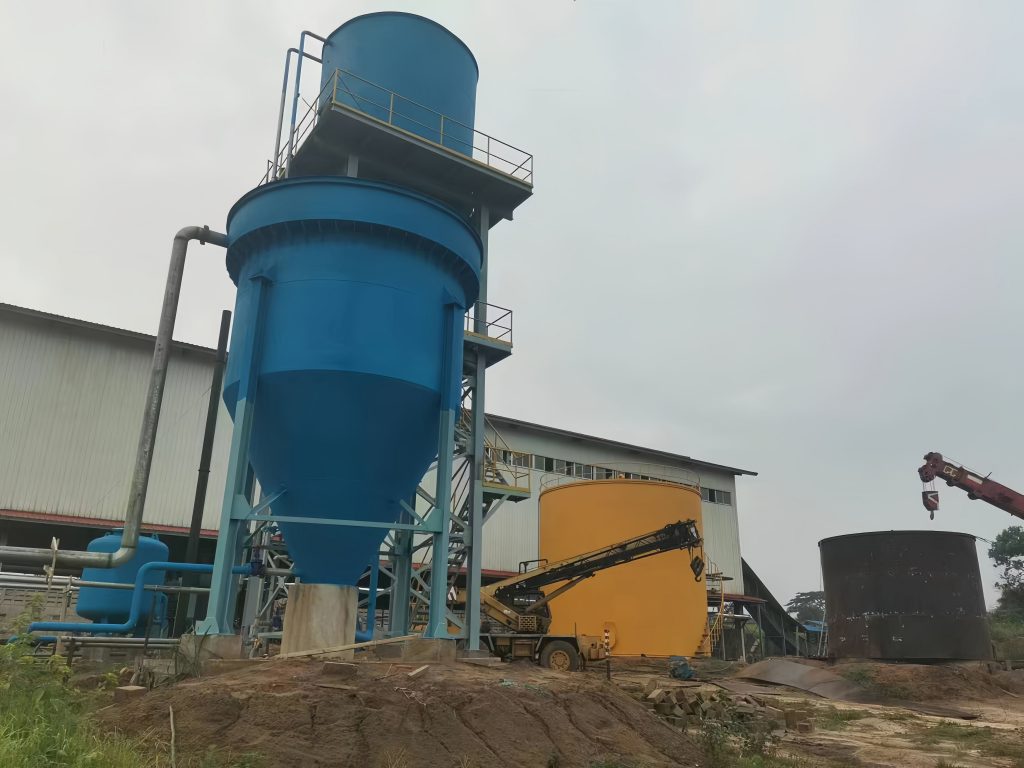The wastewater and residue treatment process of corn starch factory is as follows:
Wastewater treatment process:
Preprocessing:
Grid filtration: Wastewater first passes through the grid to remove large solid impurities, such as corn residues, fibers, etc., to prevent these impurities from causing blockage or damage to subsequent treatment equipment.
Sedimentation: The wastewater after passing through the grille enters the sedimentation tank. Under the action of gravity, the sediment and heavier suspended solids in the wastewater settle to the bottom of the tank to form sludge. Regularly clean the sludge at the bottom of the sedimentation tank to maintain the sedimentation effect.
Air flotation: For some fine suspended solids, grease, etc. that are difficult to remove through sedimentation, the air flotation method is used. Microscopic bubbles are introduced into the wastewater to cause suspended solids to adhere to the bubbles to form scum, which is then skimmed off to achieve the purpose of removing suspended solids and grease.
Regulation: The pretreated wastewater enters the regulation tank to regulate the quantity and quality of the wastewater. Since the discharge of wastewater during the corn starch production process is uneven, the regulating tank can keep the volume and quality of the wastewater relatively stable within a certain period of time, providing good conditions for subsequent biological treatment.
Anaerobic biological treatment:
Reactor selection: Commonly used anaerobic reactors include upflow anaerobic sludge bed reactor (UASB), anaerobic granular sludge expanded bed reactor (EGSB), internal circulation anaerobic reactor (IC), etc. Wastewater is in full contact with anaerobic microorganisms in these reactors.
Reaction process: Under anaerobic conditions, anaerobic microorganisms decompose most of the organic matter in the wastewater into gases such as methane and carbon dioxide, thereby reducing the organic matter content and chemical oxygen demand (COD) of the wastewater. At the same time, some nitrogen, phosphorus and other nutrients in the wastewater will also be removed to a certain extent during the anaerobic process.
Aerobic biological treatment:
Selection process: Aerobic biological treatment can use sequential batch activated sludge process (SBR), anoxic-aerobic (A/O) + secondary sedimentation tank, oxidation ditch + secondary sedimentation tank and other processes.
Reaction process: After anaerobic treatment, the wastewater enters the aerobic reactor. Under aerobic conditions, aerobic microorganisms further decompose the organic matter in the wastewater into harmless substances such as water and carbon dioxide. At the same time, the nitrification reaction is carried out to remove the wastewater. The ammonia nitrogen is converted into nitrate nitrogen, further reducing the pollutant concentration of wastewater.
Henan Huatai supply not only starch plant equipment, also starch waste water treatment, any need please email to info01@cnoilmachine.com
